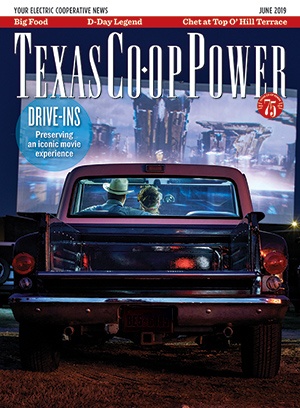Gangsters, gambling, prostitution and illicit liquor. These things spark images of Chicago or New York in the 1920s. However, right here in the Lone Star State, deeds involving such salacious elements were part of the day-to-day operations of an unassuming tearoom on an unassuming hill halfway between Dallas and Fort Worth. While the location looks different today, visitors can still step back in time to when Top O’ Hill Terrace was “Vegas before Vegas.”
In 1926, Arlington residents Fred and Mary Browning decided that Fred’s plumbing career lacked the excitement they desperately wanted. Amid the growing success of horse racing at Arlington Downs, the Brownings decided to get in on the action.
When they purchased a tearoom along the old Bankhead Highway, authorities had no idea the couple had plans beyond the teacup. The Brownings immediately began renovations, moving the tearoom to construct a network of underground rooms and tunnels. The additions included a casino, restaurant, an office and five doors at which every patron had to use passwords to gain access. There were two-way mirrors, secret staircases and fake doors, all designed to make Top O’ Hill raidproof. With the front gate a quarter-mile down the drive, patrons had ample time to hide the evidence and run into the garden to sip tea if police showed up. It was a cover so believable that many folks visited the tea garden without any knowledge of the illegal activities just beneath their feet.
The Brownings’ reputation grew as quickly as their bank account. The casino took in $50,000–$100,000 every night and attracted countless celebrities, including Bonnie and Clyde and John Wayne. The couple invested their cash into a swimming pool and air conditioning, two luxuries that were extremely rare at the time. Fred’s newfound connections led him into horse racing, most notably with his horse Royal Ford, whose foal Heelfly beat the legendary thoroughbred Seabiscuit in 1940. He also stepped into professional boxing, employing his facilities to manage and train boxers like Lou Brouillard and “Slapsie Maxie” Rosenbloom. Yet the Brownings’ very success would soon become a curse.
Top O’ Hill gained an influential enemy in J. Frank Norris, pastor of Fort Worth’s First Baptist Church and an ardent supporter of Prohibition. Norris vowed to shut down the establishment and return it to the realm of respectability. His prophecy became a reality in 1947 when Texas Rangers led a successful raid on Top O’ Hill. In 1956, Bible Baptist Seminary bought the property and transformed it into a Baptist college.
On my first guided tour, I expected to walk dark hallways and feel the breath of notorious Texas gangster Benny Binion on my neck. Instead I found the bright and bustling Arlington Baptist University with few remnants of the former days of Top O’ Hill. Soon after buying the property, the new owners tore down the tearoom and replaced the casino with a cafeteria. The stable and pool have been incorporated into daily student life, and unless you know the stories, you could miss the stable and pool completely. What does remain is the tea garden and one 50-foot escape tunnel, where creative visitors can imagine men in pinstriped suits and women in flapper dresses stuffing gambling chips into their pockets to the muted sounds of a jazz band.
While visitors can no longer throw $20 down on the roulette table, the cost of a tour is well worth the money. And while almost every Texas town has its stories of forbidden back alleys or underground operations, no Prohibition-era story is as Texas-sized as that of Top O’ Hill Terrace.
Chet Garner shares his Texplorations as the host of The Daytripper on PBS.

